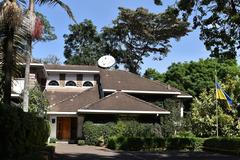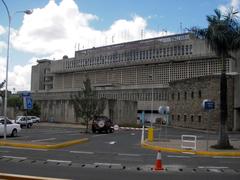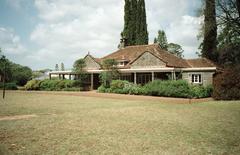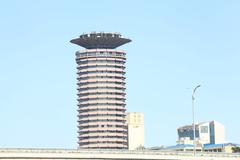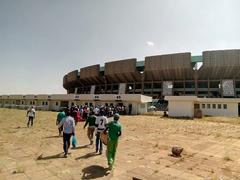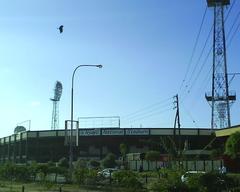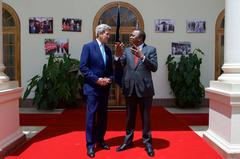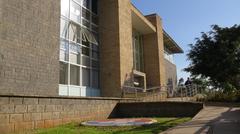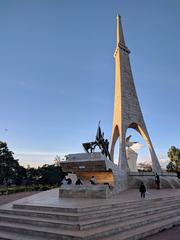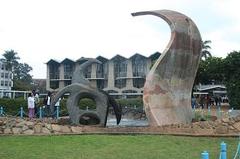Kenya National Theatre Nairobi: Visiting Hours, Tickets, and Historical Site Guide
Date: 04/07/2025
Introduction
The Kenya National Theatre (KNT) stands as a vibrant symbol of Kenya’s cultural heritage, reflecting the nation’s artistic, social, and political evolution. Since its establishment in the early 1950s, the theatre has transformed from an exclusive colonial venue into a dynamic public space that champions Kenyan performing arts, fosters talent, and serves as a platform for national dialogue. This comprehensive guide details the theatre’s history, architecture, visiting hours, ticketing, accessibility, and practical tips, ensuring visitors can make the most of their experience at this iconic Nairobi landmark (Kenya Cultural Centre, Wikipedia, People Daily).
Table of Contents
- Introduction
- Historical Overview
- Architectural Features and Facilities
- Visiting the Kenya National Theatre
- Visitor Experience and Tips
- Frequently Asked Questions (FAQ)
- Conclusion
- References
Historical Overview
Colonial Foundations and Early Development
The Kenya National Theatre was established in the early 1950s, marking a significant addition to Nairobi’s cultural landscape (Buildesign). Initially constructed to serve colonial elites, the theatre was built on Harry Thuku Road, strategically placed near administrative centers yet distant from African neighborhoods. Its exclusivity reflected colonial social divisions, with African participation forbidden both on stage and in the audience during its early years. The theatre officially opened in 1952, becoming the first such facility in the region (Wikipedia).
Transition to Independence and Africanization
Following independence in 1963, the theatre gradually opened its doors to African artists and audiences, though the transformation was complex and sometimes contested. Notable figures like James Falkland played a role in training African actors and directors, and the theatre became home to important events such as the National Schools Drama Festival (People Daily, Kenya Cultural Centre).
Political Expression and Censorship
During the 1970s and 1980s, KNT emerged as a powerful stage for political commentary. Landmark productions such as Ngũgĩ wa Thiong’o’s “I Will Marry When I Want” and “Muntu” challenged the status quo, leading to government censorship and even imprisonment of artists (Egotickets). The theatre’s history is thus intertwined with Kenya’s struggle for freedom of expression and social justice (People Daily).
Cultural Renaissance and Modernization
In the 21st century, KNT has seen a resurgence, driven by new generations of artists and supportive government initiatives such as Vision 2030. Major refurbishments in 2014–2015 modernized the theatre’s facilities, ensuring it continues to serve as Kenya’s leading stage for drama, music, and dance (Buildesign). Initiatives like the Kenya Theatre Awards and the “County Theatre Fiesta” have further expanded the theatre’s impact, promoting talent at both national and grassroots levels (Kenya Cultural Centre PDF).
Architectural Features and Facilities
KNT’s architecture is characterized by its English Renaissance-inspired design and imposing façade with broad steps and stately columns (Visit Nairobi Kenya). Key facilities include:
- Auditorium: 345-seat main hall (278 stalls, 67 balcony seats), proscenium stage (9x10 meters), and advanced lighting/sound systems.
- Backstage: Four fully furnished changing rooms, wardrobe room, double shower rooms, and spacious rehearsal spaces.
- Hospitality: The Wasanii Restaurant, two extended balconies for socializing, and open lawns for exhibitions and outdoor events.
- Creative Spaces: Kona Wasanii (open-air creative hub), Ukumbi Mdogo (smaller auditorium for experimental works), and dance studios.
- Accessibility: Ramps, accessible restrooms, and designated seating for wheelchair users (Kendirita Safaris).
Visiting the Kenya National Theatre
Visiting Hours
- Monday to Friday: 9:00 AM – 9:00 PM
- Saturday: 10:00 AM – 10:00 PM
- Sunday: Closed
Note: Performance days may have extended hours. Always check the official website or contact the box office for the latest schedules.
Ticket Information
- General Admission: Ksh 300 – Ksh 1,500 (depending on the production)
- Special Events: Major shows may charge up to Ksh 2,000; early bird and group discounts available for select performances (Twende Sasa)
- Purchase Options: Online via the official Kenya Cultural Centre, at the box office, or through event organizers’ social media platforms
Accessibility
Recent renovations ensure wheelchair access through ramps and reserved seating. Accessible restrooms are available, with staff ready to assist visitors with mobility challenges.
Getting There
Located on Harry Thuku Road, KNT is adjacent to the University of Nairobi and Kenya’s national broadcaster, KBC. It is within walking distance of Nairobi’s central business district and accessible via public transport, taxis, and ride-hailing apps (Uber, Bolt). Parking is available nearby.
Guided Tours and Special Events
Guided tours can be arranged by appointment, offering insights into the theatre’s history and operations. The theatre’s lawns and creative spaces frequently host festivals, workshops, and exhibitions. Check the official website for upcoming events (Kendirita Safaris).
Nearby Attractions
- Nairobi National Museum
- Nairobi Gallery
- Uhuru Park
- Kenyatta International Conference Centre
- Odeon Cinema
These sites are all within a short distance, making it easy to combine your theatre visit with a broader cultural itinerary.
Visitor Experience and Tips
- Arrive Early: For the best seating and to explore the grounds, arrive at least 30 minutes before showtime.
- Dress Code: Smart-casual attire is suitable for most performances.
- Photography: Permitted in public areas and gardens but not during performances.
- Food & Drink: Enjoy refreshments at the Wasanii Restaurant or explore nearby Nairobi eateries.
- Security: Expect bag checks; carry minimal valuables.
- Children: Many shows are family-friendly, but confirm age suitability before booking.
- Language: English and Swahili are widely spoken by staff and performers.
Frequently Asked Questions (FAQ)
Q: What are the Kenya National Theatre’s visiting hours?
A: Monday–Friday 9 AM–9 PM, Saturday 10 AM–10 PM, closed Sunday.
Q: How can I purchase tickets?
A: Tickets are available online, at the box office, and through organizers’ social media.
Q: Is the theatre accessible for people with disabilities?
A: Yes, with ramps, accessible restrooms, and reserved seating.
Q: Are guided tours available?
A: Yes, by appointment. Contact the theatre for details.
Q: What nearby attractions can I visit?
A: Nairobi National Museum, Kenyatta International Conference Centre, Uhuru Park, and more.
Conclusion
The Kenya National Theatre is an essential destination for anyone interested in Kenyan culture, history, and the performing arts. Its rich programming, modern facilities, and accessible location make it ideal for both casual visitors and dedicated art enthusiasts. To maximize your visit:
- Purchase tickets in advance
- Explore guided tours
- Attend during festivals for a vibrant atmosphere
- Download the Audiala app for event updates and ticketing
Experience the heartbeat of Kenyan creativity at the Kenya National Theatre—a cornerstone of Nairobi’s cultural scene (Kenya Cultural Centre, Buildesign, Egotickets).
References
- Kenya National Theatre – Kenya Cultural Centre
- Kenya National Theatre – Wikipedia
- Kenya National Theatre’s Journey of Transformation – People Daily
- Kenya National Theatre Refurbishment – Buildesign
- The Trial of Dedan Kimathi Event – Egotickets
- Kenyan Theatre Good, Bad & Ugly – The Theatre Times
- Kenya National Theatre Visiting Information – Twende Sasa
- Kenya National Theatre Visitor Guide – Kendirita Safaris
- Nairobi Weather in July – Global Highlights
- Wangu wa Makeri Play Coverage – Kenyan Vibe
